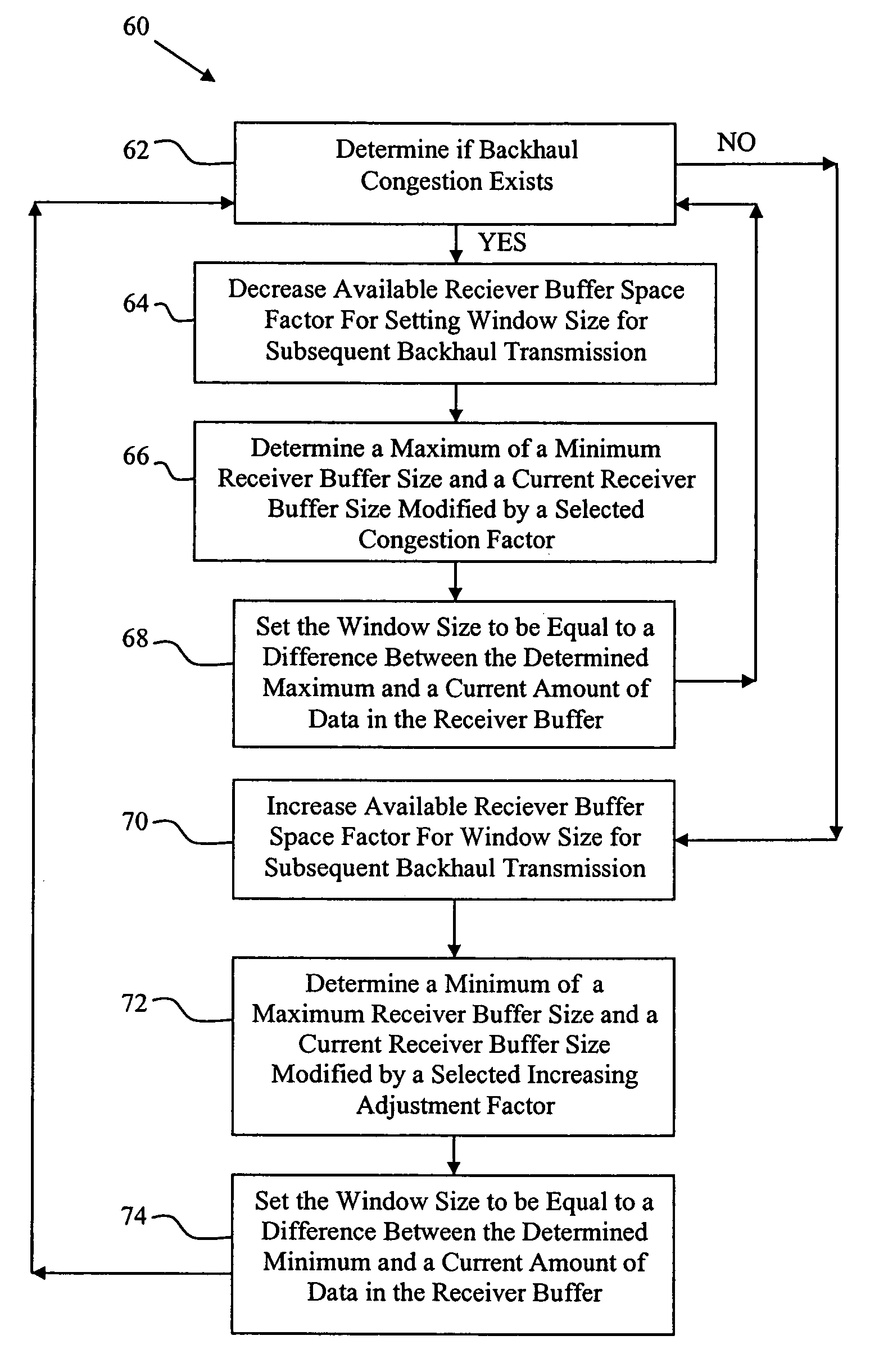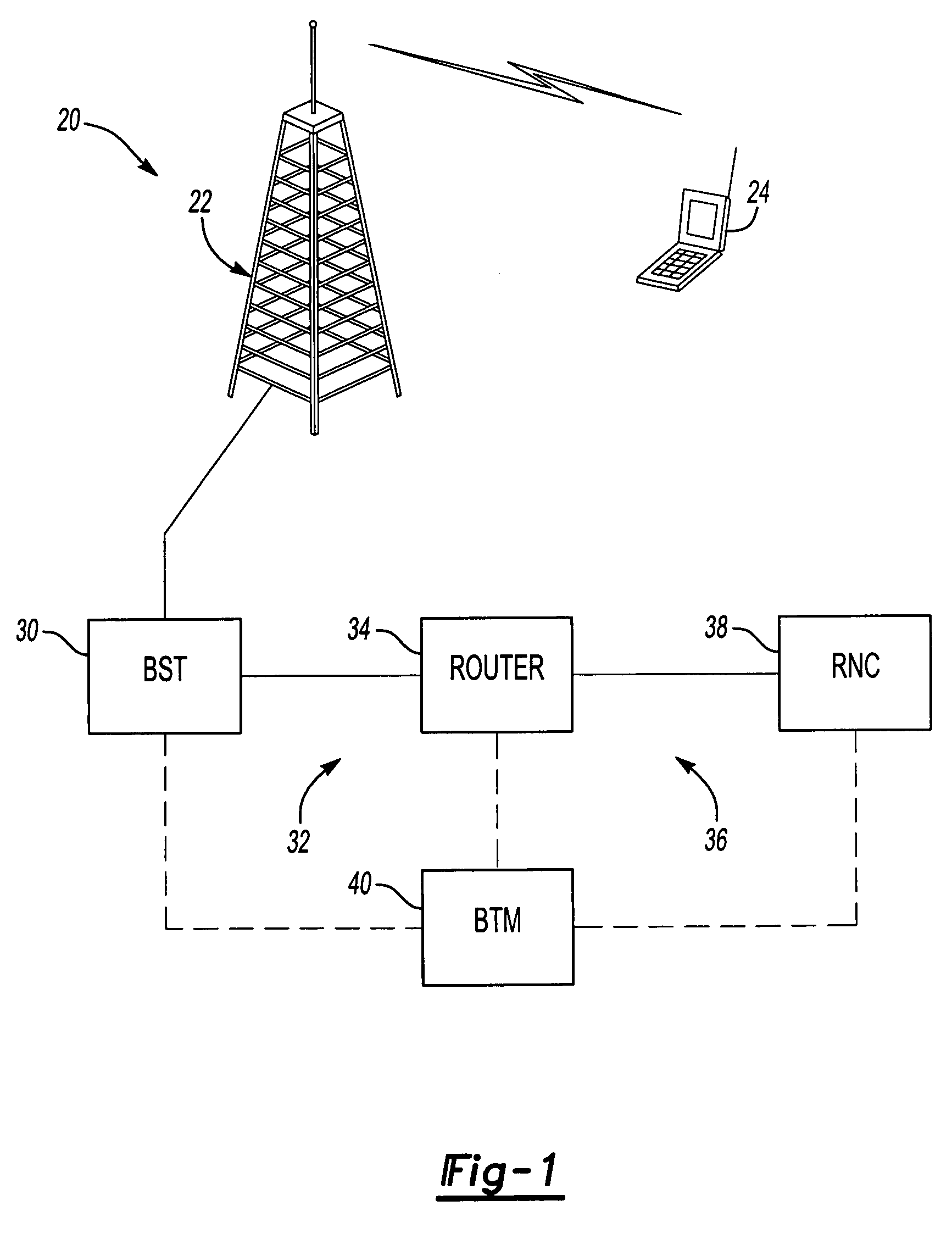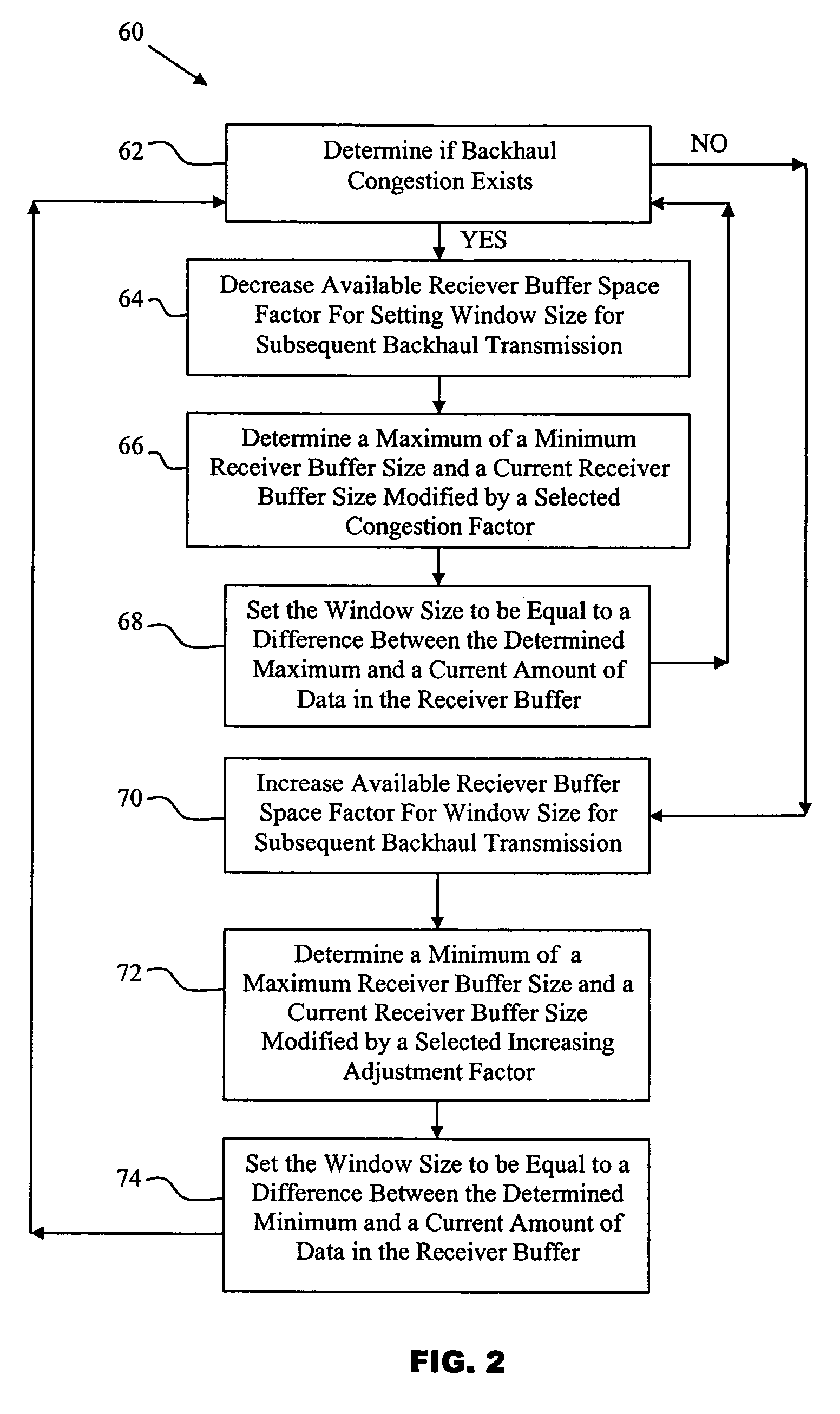Backhaul congestion control for wireless communication networks
a wireless communication network and backhaul congestion technology, applied in the field of wireless communication systems, can solve the problems of unresolved backhaul congestion problems, dropped packets, congestion on backhaul links, etc., and achieve the effect of facilitating maintaining backhaul conditions, reducing buffer space factor available for backhaul receivers, and increasing buffer space factor
- Summary
- Abstract
- Description
- Claims
- Application Information
AI Technical Summary
Benefits of technology
Problems solved by technology
Method used
Image
Examples
Embodiment Construction
[0016]This invention provides a backhaul congestion control technique that minimizes or avoids backhaul congestion. A disclosed example includes adjusting an available buffer space factor used for window size for subsequent backhaul communications responsive to current backhaul traffic or congestion conditions. The disclosed example includes the ability to increase or decrease the available buffer space factor based upon the current congestion conditions. By responsively controlling the available buffer space factor to accommodate current traffic conditions, the disclosed example facilitates more efficient backhaul communications and eliminates or minimizes backhaul congestion.
[0017]FIG. 1 schematically shows selected portions of a wireless communication system 20. A base station radio tower 22 uses an over-the-air interface for communications with one or more mobile stations 24. The base station radio tower 22 operates in a known manner in conjunction with a base station transceive...
PUM
 Login to View More
Login to View More Abstract
Description
Claims
Application Information
 Login to View More
Login to View More - R&D
- Intellectual Property
- Life Sciences
- Materials
- Tech Scout
- Unparalleled Data Quality
- Higher Quality Content
- 60% Fewer Hallucinations
Browse by: Latest US Patents, China's latest patents, Technical Efficacy Thesaurus, Application Domain, Technology Topic, Popular Technical Reports.
© 2025 PatSnap. All rights reserved.Legal|Privacy policy|Modern Slavery Act Transparency Statement|Sitemap|About US| Contact US: help@patsnap.com



